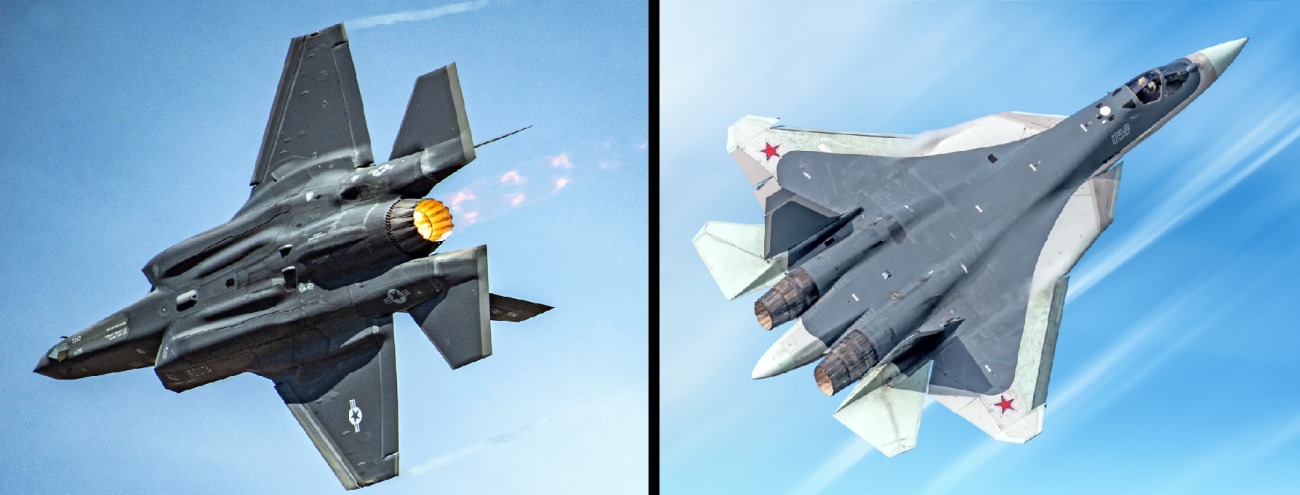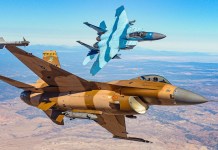India’s ambition to enhance its air power with a fifth-generation fighter seems to have hit another snag. While its indigenous Advanced Medium Combat Aircraft (AMCA) is still almost a decade away, New Delhi has reportedly indicated that it is not keen on the US F-35 Lightning II.
India has told the United States that it is not keen on purchasing the Lockheed Martin F-35A Lightning II, months after the US President Donald Trump offered the aircraft to India in February 2025, Bloomberg reported.
The report comes after Donald Trump slapped a 25% tariff on Indian goods, after the two countries failed to reach a mini trade deal due to India’s reluctance to open up its market.
Trump lambasted India for having the world’s worst tariff and non-tariff barriers and also condemned India’s strong ties with its age-old friend and strategic partner, Russia.
“Also, they have always bought a vast majority of their military equipment from Russia, and are Russia’s largest buyer of energy, along with China, at a time when everyone wants Russia to stop the killing in Ukraine — All things not good!” he wrote on Truth Social.
The US President, who was until recently calling India a friend, went so far as to call India a “dead economy” and made a snide remark, saying that maybe Pakistan could one day sell oil to India, referring to US plans to develop oil reserves in Pakistan.
India’s position is in contrast to that of Japan and South Korea. While Japan was reported to be using the potential purchase of fighter jets and cruise missiles as potential bargaining chips in negotiations over US tariffs, South Korean officials recently confirmed that defense and arms purchases were on the negotiation list. Needless to say, both countries have managed to secure a favorable 15% tariff rate.
While making a verbal pitch for F-35 export to India, Trump earlier told reporters: “Starting this year, we will be increasing military sales to India by many billions of dollars. We are also paving the way to ultimately provide India with the F-35 stealth fighters.” The sentiment was reiterated by US Vice President J.D. Vance during a visit to India in April, where he said: “We want your nation to buy more of our military equipment, which, of course, we believe is the best in class. American fifth-generation F-35, for example, will enable the Indian Air Force to defend your airspace and protect your people.”
Chinese HQ-16 Missile System “Spotted” In Wisconsin! U.S., China Build Decoys For Potential Clash
No Fifth-Generation Fighter For India?
India currently finds itself in a bind. The country is developing the Advanced Medium Combat Aircraft (AMCA) fifth-generation stealth aircraft. However, the Defence Research and Development Organisation (DRDO) states that the first AMCA will be delivered a decade from now, in 2035. Awaiting the AMCA would essentially leave India with a glaring capability gap vis-à-vis adversaries, China and Pakistan.
China has two fifth-generation stealth fighters—the J-20 and the new J-35A. In addition, it is now testing two separate prototypes of sixth-generation fighters, colloquially called J-36 and J-50.
It is predicted that by the time India inducts its first AMCA into service, the Chinese People’s Liberation Army Air Force (PLAAF) will already be flying and mass-producing sixth-generation fighter jets.
Since a full-scale war with China is believed to be unlikely, as both nations are aggressively trying to mend bilateral relations, India may have overlooked this widening capability gap with Beijing.
However, that changed when Pakistan announced it was acquiring the J-35A 5th-gen fighter from China. According to initial information, which was later retracted by Islamabad, Pakistan was planning to acquire 40 J-35A stealth fighter jets and induct them into the PAF by 2026-27.
Indian analysts have long discussed the need for a stopgap solution to bridge the capability gap with China and Pakistan. Many experts have rallied behind the acquisition of a foreign fifth-generation aircraft that would help ramp up capability in the short term, while accelerating the AMCA program for the long term.
India’s only options are the American F-35 Lightning II and the Russian Su-57. And, with India reportedly declining the F-35 offer (yet to be officially confirmed), the only remaining option is the Russian fifth-generation aircraft.
Russia’s state arms exporter, Rosoboronexport, had offered a “golden deal” to the Indian Air Force (IAF). Alexander Mikheev, Director General of Rosoboronexport, proposed “the all-round development of cooperation on the Su-57E project. Among our proposals is the supply of ready-made aircraft, the organization of their joint production in India, as well as assistance in the development of an Indian fifth-generation fighter.”
Additionally, Rosoboronexport signalled it will leverage the existing Su-30MKI infrastructure for the local production of Su-57E in India. It said that if India finalizes the deal, the Indian companies that manufacture Russian Su-30MKI fighter jets can soon begin producing the fifth-generation Su-57E fighter. This makes the deal more palatable for New Delhi.
However, amid Donald Trump’s severe criticism of India’s arms purchases from Russia, a decision to acquire or locally produce the Su-57 can backfire and further upset ties with Washington.
Moreover, since India has reportedly refused to buy American F-35, the acquisition of the Russian Su-57 could further strain US-India relations.

What Can India Do?
IAF Air Marshal, Anil Chopra (retd), and a very prominent military analyst, says: “Trump’s imposition of 25% tariff is just signalling. However, India should not buy American equipment for a while because the US is favouring Pakistan. We have seen this happen before, and the US is not a reliable partner. Who knows what road they will take in the future and what restrictions they could impose? Moreover, they have scuttled our production of Tejas by delaying the GE-404 engines by about 18 months. Indian position is spot on.”
“As far as the F-35 is concerned, the Indian Air Force (IAF) has already said in public that a formal offer was not made. There was no Request for Information (RFI), no negotiations. It was not a real offer to begin with. We have been in a bind for a long time because even the Su-57 is not good enough. We were part of the FGFA program, we invested money, and we walked out. It was for a reason. The Su-57 is probably not even stealthy enough,” the veteran added with concern.
When asked about the way forward, Air Marshal Chopra said, “India’s acquisition of a foreign fifth-generation aircraft should be paused for now, and the Indian MoD must make sure that the AMCA is a success. They should bring in private players, acquire technology from the West or elsewhere, build relations with other states that have also suffered due to high tariffs, and somehow just accelerate the AMCA program. Until then, 4.5th-generation fighters should hold fort.”
That said, the IAF seems to be feeling the heat, especially as it has just emerged from a conflict with Pakistan and is staring at an all-time low squadron strength (29 as opposed to the sanctioned 42). It recently made a detailed presentation to the government outlining its future requirements for maintaining an edge over adversaries.
Moreover, an empowered committee led by Defence Secretary RK Singh recommended the induction of fifth-generation fighter jets to enhance the force’s deterrence and preparedness, especially along the northern and western borders.
While security analysts have intensively debated the F-35 versus the Su-57 issue, the debate has recently tilted considerably in favor of the Su-57 due to several factors, as recently reported in depth by the EurAsian Times.
The Indian government has refrained from publicly favoring either of the aircraft on offer. Some experts, as previously reported by the EurAsian Times, have called upon the government to put in motion the Multi Role Fighter Aircraft (MRFA) and acquire a potent 4.5th-generation fighter, like the French Rafale.
The argument is that any conflict that is fought by India would require numbers, along with capability.
- Contact the author at sakshi.tiwari9555 (at) gmail.com
- Follow EurAsian Times on Google News




